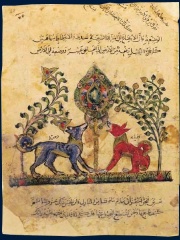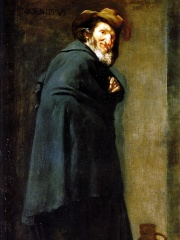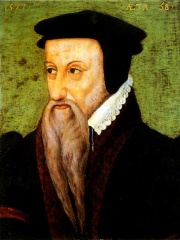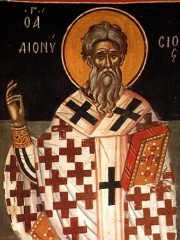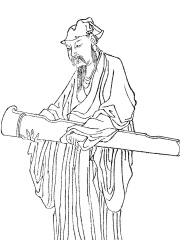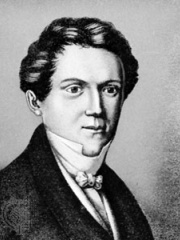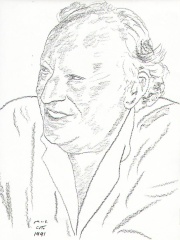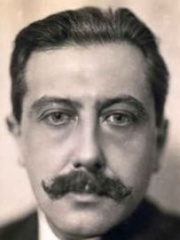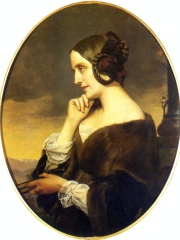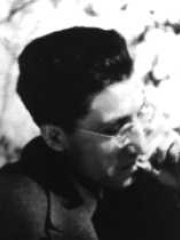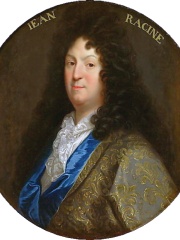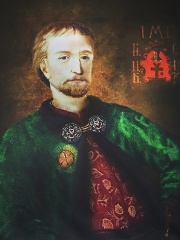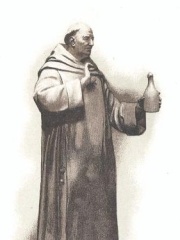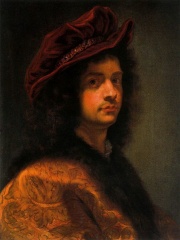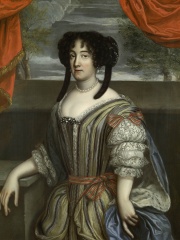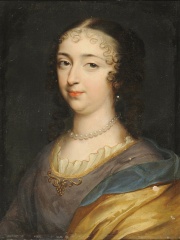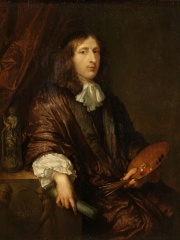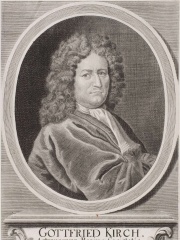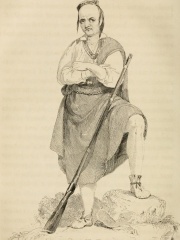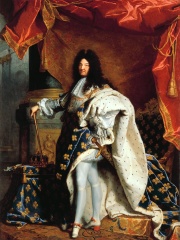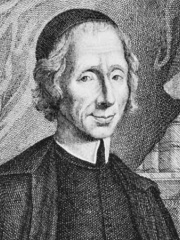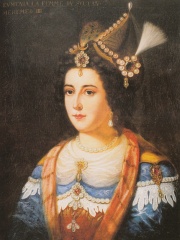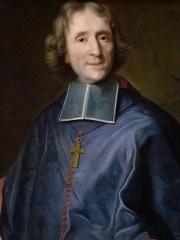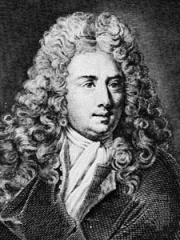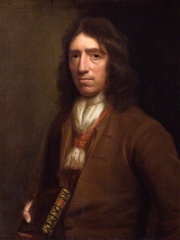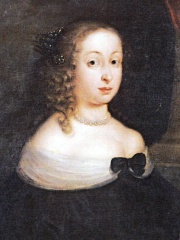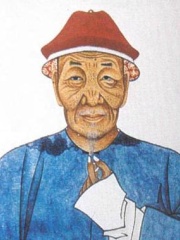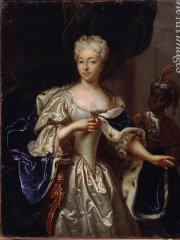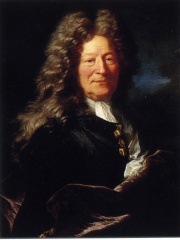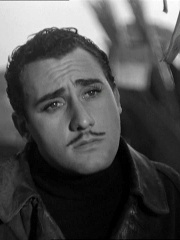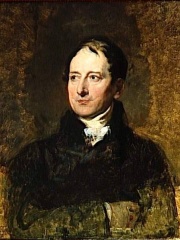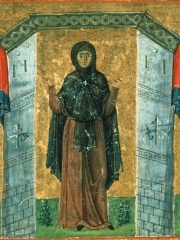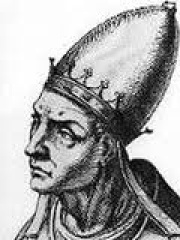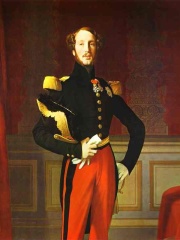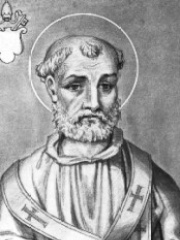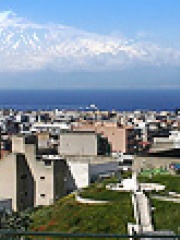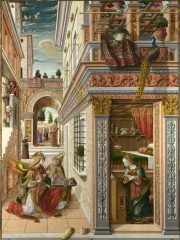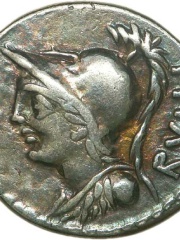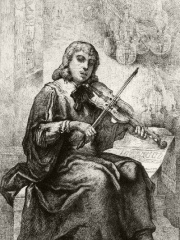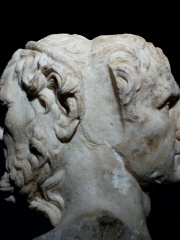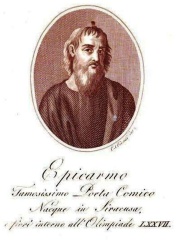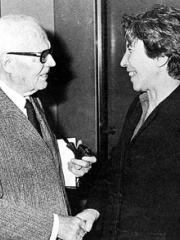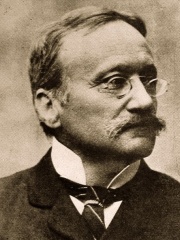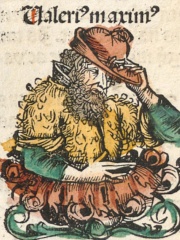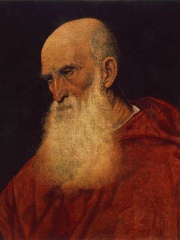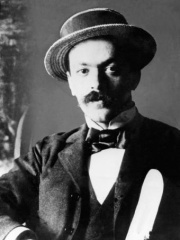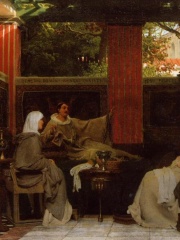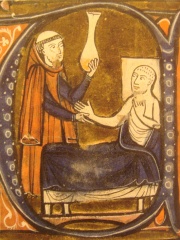WRITER
Marie Mancini
1639 - 1715

 Marie Mancini
Marie Mancini
Anna Maria (Marie) Mancini (28 August 1639 – 8 May 1715) was the third of the five Mancini sisters; nieces to Cardinal Mazarin who were brought to France to marry advantageously. Along with two of their female Martinozzi cousins, the Mancini sisters were known at the court of King Louis XIV of France as the Mazarinettes. Read more on Wikipedia
Since 2007, the English Wikipedia page of Marie Mancini has received more than 192,258 page views. Her biography is available in 25 different languages on Wikipedia (down from 26 in 2019). Marie Mancini is the 790th most popular writer (down from 728th in 2019), the 941st most popular biography from Italy (down from 883rd in 2019) and the 68th most popular Italian Writer.
Marie Mancini was a niece of Cardinal Mazarin and a sister of the famous Hortense Mancini, Duchesse de Nemours. She was a mistress of Louis XIV of France and bore him two children.
Memorability Metrics
190k
Page Views (PV)
63.44
Historical Popularity Index (HPI)
25
Languages Editions (L)
8.57
Effective Languages (L*)
1.84
Coefficient of Variation (CV)
Notable Works
Page views of Marie Mancinis by language
Over the past year Marie Mancini has had the most page views in the French wikipedia edition with 19,977 views, followed by English (19,021), and Italian (8,540). In terms of yearly growth of page views the top 3 wikpedia editions are Galician (52.36%), Esperanto (51.10%), and Ukrainian (27.40%)
Among WRITERS
Among writers, Marie Mancini ranks 790 out of 7,302. Before her are Ibn al-Muqaffa', Menippus, Theodore Beza, Pope Dionysius of Alexandria, Tao Yuanming, and Jin Yong. After her are Wilhelm Hauff, Leon Uris, Georges Bernanos, Marie d'Agoult, Alexander Litvinenko, and Cesare Pavese.
Most Popular Writers in Wikipedia
Go to all RankingsIbn al-Muqaffa'
724 - 756
HPI: 63.50
Rank: 784
Menippus
290 BC - 260 BC
HPI: 63.50
Rank: 785
Theodore Beza
1519 - 1605
HPI: 63.50
Rank: 786
Pope Dionysius of Alexandria
190 - 264
HPI: 63.46
Rank: 787
Tao Yuanming
365 - 427
HPI: 63.45
Rank: 788
Jin Yong
1924 - 2018
HPI: 63.44
Rank: 789
Marie Mancini
1639 - 1715
HPI: 63.44
Rank: 790
Wilhelm Hauff
1802 - 1827
HPI: 63.43
Rank: 791
Leon Uris
1924 - 2003
HPI: 63.43
Rank: 792
Georges Bernanos
1888 - 1948
HPI: 63.43
Rank: 793
Marie d'Agoult
1805 - 1876
HPI: 63.42
Rank: 794
Alexander Litvinenko
1962 - 2006
HPI: 63.42
Rank: 795
Cesare Pavese
1908 - 1950
HPI: 63.42
Rank: 796
Contemporaries
Among people born in 1639, Marie Mancini ranks 4. Before her are Jean Racine, Ivan Mazepa, and Dom Pérignon. After her are Giovanni Battista Gaulli, Catherine Charlotte de Gramont, Éléonore Desmier d'Olbreuse, Laura Martinozzi, Caspar Netscher, Gottfried Kirch, and Metacomet. Among people deceased in 1715, Marie Mancini ranks 7. Before her are Louis XIV of France, Nicolas Malebranche, Gülnuş Sultan, François Fénelon, Dom Pérignon, and Antoine Galland. After her are William Dampier, Thomas Savery, Hedwig Eleonora of Holstein-Gottorp, Pu Songling, Charlotte Christine of Brunswick-Wolfenbüttel, and François Girardon.
Others Born in 1639
Go to all RankingsJean Racine
WRITER
1639 - 1699
HPI: 74.42
Rank: 1
Ivan Mazepa
POLITICIAN
1639 - 1709
HPI: 70.24
Rank: 2
Dom Pérignon
POLITICIAN
1639 - 1715
HPI: 65.18
Rank: 3
Marie Mancini
WRITER
1639 - 1715
HPI: 63.44
Rank: 4
Giovanni Battista Gaulli
PAINTER
1639 - 1709
HPI: 57.34
Rank: 5
Catherine Charlotte de Gramont
POLITICIAN
1639 - 1678
HPI: 56.54
Rank: 6
Éléonore Desmier d'Olbreuse
COMPANION
1639 - 1722
HPI: 54.93
Rank: 7
Laura Martinozzi
POLITICIAN
1639 - 1687
HPI: 53.71
Rank: 8
Caspar Netscher
PAINTER
1639 - 1684
HPI: 53.46
Rank: 9
Gottfried Kirch
ASTRONOMER
1639 - 1710
HPI: 47.94
Rank: 10
Metacomet
POLITICIAN
1639 - 1676
HPI: 46.61
Rank: 11
Others Deceased in 1715
Go to all RankingsLouis XIV of France
POLITICIAN
1638 - 1715
HPI: 90.57
Rank: 1
Nicolas Malebranche
PHILOSOPHER
1638 - 1715
HPI: 69.07
Rank: 2
Gülnuş Sultan
POLITICIAN
1642 - 1715
HPI: 65.83
Rank: 3
François Fénelon
PHILOSOPHER
1651 - 1715
HPI: 65.23
Rank: 4
Dom Pérignon
POLITICIAN
1639 - 1715
HPI: 65.18
Rank: 5
Antoine Galland
WRITER
1646 - 1715
HPI: 63.58
Rank: 6
Marie Mancini
WRITER
1639 - 1715
HPI: 63.44
Rank: 7
William Dampier
EXPLORER
1651 - 1715
HPI: 63.39
Rank: 8
Thomas Savery
INVENTOR
1650 - 1715
HPI: 63.17
Rank: 9
Hedwig Eleonora of Holstein-Gottorp
POLITICIAN
1636 - 1715
HPI: 61.91
Rank: 10
Pu Songling
WRITER
1640 - 1715
HPI: 61.17
Rank: 11
Charlotte Christine of Brunswick-Wolfenbüttel
COMPANION
1694 - 1715
HPI: 59.39
Rank: 12
François Girardon
SCULPTOR
1628 - 1715
HPI: 57.41
Rank: 13
In Italy
Among people born in Italy, Marie Mancini ranks 941 out of 5,161. Before her are Alberto Sordi (1920), François Gérard (1770), Melania the Younger (383), Pope Leo VIII (900), Ferdinand Philippe, Duke of Orléans (1810), and Sandro Mazzola (1942). After her are Antipope Anacletus II (1090), Cesare Pavese (1908), Ibycus (-600), Carlo Crivelli (1430), Servilia (-104), and Nicola Amati (1596).
Others born in Italy
Go to all RankingsAlberto Sordi
ACTOR
1920 - 2003
HPI: 63.54
Rank: 935
François Gérard
PAINTER
1770 - 1837
HPI: 63.53
Rank: 936
Melania the Younger
RELIGIOUS FIGURE
383 - 439
HPI: 63.53
Rank: 937
Pope Leo VIII
RELIGIOUS FIGURE
900 - 965
HPI: 63.52
Rank: 938
Ferdinand Philippe, Duke of Orléans
POLITICIAN
1810 - 1842
HPI: 63.51
Rank: 939
Sandro Mazzola
SOCCER PLAYER
1942 - Present
HPI: 63.46
Rank: 940
Marie Mancini
WRITER
1639 - 1715
HPI: 63.44
Rank: 941
Antipope Anacletus II
RELIGIOUS FIGURE
1090 - 1138
HPI: 63.44
Rank: 942
Cesare Pavese
WRITER
1908 - 1950
HPI: 63.42
Rank: 943
Ibycus
WRITER
600 BC - 600 BC
HPI: 63.42
Rank: 944
Carlo Crivelli
PAINTER
1430 - 1490
HPI: 63.42
Rank: 945
Servilia
POLITICIAN
104 BC - 42 BC
HPI: 63.41
Rank: 946
Nicola Amati
POLITICIAN
1596 - 1684
HPI: 63.40
Rank: 947
Among WRITERS In Italy
Among writers born in Italy, Marie Mancini ranks 68. Before her are Theognis of Megara (-570), Epicharmus of Kos (-524), Antonio Tabucchi (1943), Natalia Ginzburg (1916), Arrigo Boito (1842), and Valerius Maximus (-100). After her are Cesare Pavese (1908), Ibycus (-600), Pietro Bembo (1470), Italo Svevo (1861), Venantius Fortunatus (530), and Gerard of Cremona (1114).
Theognis of Megara
570 BC - 485 BC
HPI: 63.77
Rank: 62
Epicharmus of Kos
524 BC - 435 BC
HPI: 63.64
Rank: 63
Antonio Tabucchi
1943 - 2012
HPI: 63.64
Rank: 64
Natalia Ginzburg
1916 - 1991
HPI: 63.61
Rank: 65
Arrigo Boito
1842 - 1918
HPI: 63.57
Rank: 66
Valerius Maximus
100 BC - 100
HPI: 63.55
Rank: 67
Marie Mancini
1639 - 1715
HPI: 63.44
Rank: 68
Cesare Pavese
1908 - 1950
HPI: 63.42
Rank: 69
Ibycus
600 BC - 600 BC
HPI: 63.42
Rank: 70
Pietro Bembo
1470 - 1547
HPI: 63.38
Rank: 71
Italo Svevo
1861 - 1928
HPI: 63.14
Rank: 72
Venantius Fortunatus
530 - 609
HPI: 63.14
Rank: 73
Gerard of Cremona
1114 - 1187
HPI: 63.10
Rank: 74
